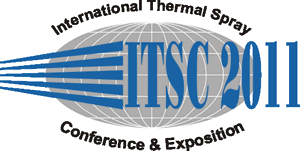
|
| Abstract No.: |
|
Scheduled at:
|
Tuesday, September 27, 2011, Saal B2.2 11:25 AM
Modeling & Simulation 1
|
|
| Title: |
Stress and microstructure evolutions during deposition of thermal barrier coatings by plasma spraying
|
|
| Authors: |
Kentaro Shinoda / Center for Thermal Spray Research
Stony Brook University, USA
Toshio Nakamura/ Center for Thermal Spray Research, Stony Brook University, USA
Sanjay Sampath*/ Center for Thermal Spray Research, Stony Brook University, USA
|
|
| Abstract: |
Non-particle state parameters (NPSPs) such as the deposition rate and temperature play a critical role to determine the stress state and properties of thermal barrier coatings in addition to particle state parameters. In this paper, contributions of the NPSPs to the stress evolution and resultant microstructural development are examined. The stress evolution and deposition temperature during the deposition of yttria-stabilized zirconia coatings by atmospheric dc plasma spraying were monitored with an in situ coating property sensor based on a curvature measurement technique and an infrared sensor. The stress evolution during the deposition (named the evolving stress) was a constant unless vertical cracks or horizontal delamination were induced. The evolving stress tends to have increased as the deposition temperature increased. The deposition process was also simulated in detail by a finite element method in which anelastic properties of deposited coatings were taken into account. It was shown that the evolving stress increased as the in-plane modulus of the coatings increased. Since an increase in the deposition temperature can contribute an increase in the coating modulus, the simulation result supports the experimental observation. More detail analysis of experimental and simulation results including transient variations in the deposition temperature came to conclude an importance of the local deposition temperature and splat impact interval among NPSPs.
|
|
